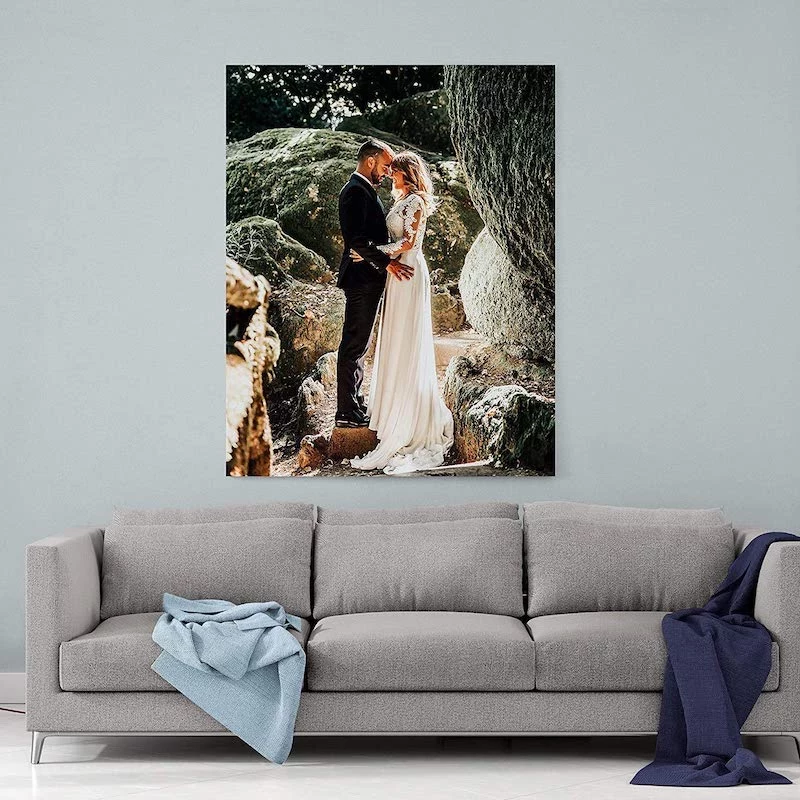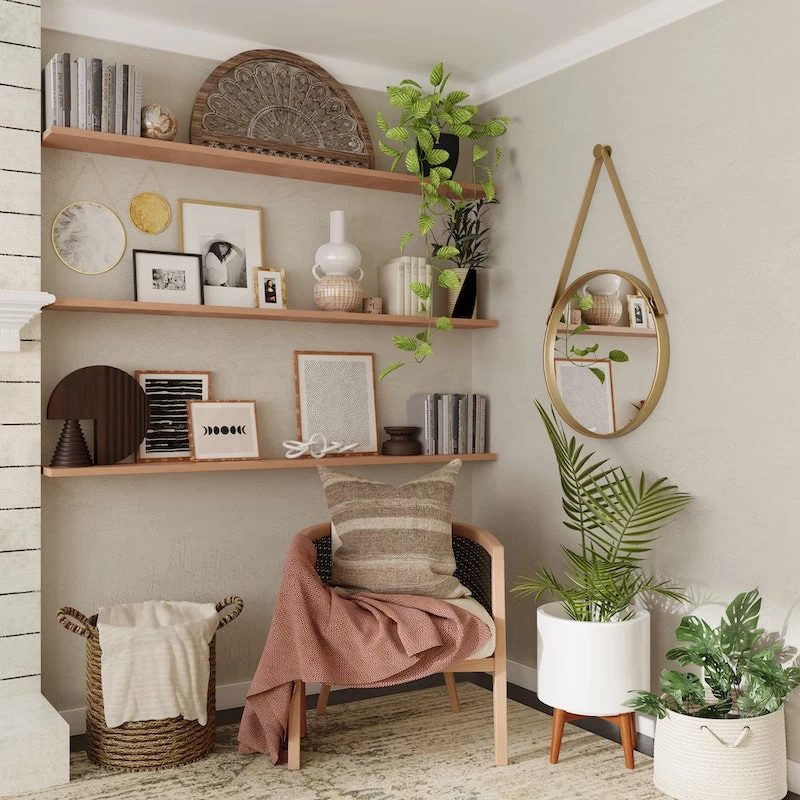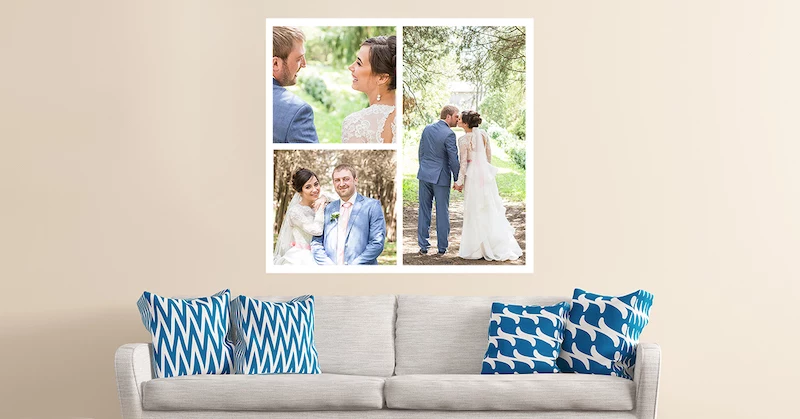Your New House Feels Weird, Right? Here’s Exactly How to Fix It.
Moving into a new house is such a strange feeling. One day it’s an empty building humming with possibility, and the next, it’s filled with your boxes but still feels like you’re crashing at a stranger’s place. You know the feeling—the way your footsteps echo a little too loudly, or how the light from those bare bulbs feels cold and clinical. I’ve been in the design world for a long time, and honestly, I’ve gone through this myself more times than I care to admit.
In this article
A lot of people think the fix is to just unpack faster. They rush to hang pictures and buy new furniture, hoping that stuff will magically make it feel like home. But it’s so much deeper than that. Making a house feel like yours is about tuning the space to your senses. It’s a very deliberate process of mastering light, sound, and space to create a genuine feeling of safety and comfort.

So, forget the vague advice. We’re going to build a real framework to turn that structure into your sanctuary.
Let’s Get a Little Nerdy: Why Your Senses Are Freaking Out
Before you even think about where the sofa goes, it helps to understand why some spaces feel amazing and others just… don’t. This isn’t about having “good taste.” It’s about the basic physics and biology of how we experience our environment. Nail these fundamentals, and everything else falls into place.
Light is Everything: Mood, Color, and Vibe
Light is, without a doubt, the most powerful tool you have for shaping a room’s mood. It messes with our internal body clock, and the wrong kind of light can leave you feeling anxious and unsettled.
First up is color temperature. Think of it as the “mood” of the light, measured in Kelvin (K). Lower numbers mean warmer, yellower light, like a candle or an old-school incandescent bulb (around 2700K). Higher numbers give you that cool, blue-ish light you see in offices or on an overcast day (4000K-6500K). For your living areas and bedrooms, you absolutely want warm light. I pretty much exclusively stick to bulbs between 2700K and 3000K. This range mimics the warm glow of evening sun, which tells your brain it’s time to chill out. Putting a 5000K bulb in your bedroom is like staring into a smartphone screen right before bed—it’s a recipe for terrible sleep.

Then there’s the Color Rendering Index (CRI). This is a game-changer. It’s a scale from 0 to 100 that tells you how accurately a light source shows true colors. The sun is a perfect 100. A lot of cheap LED bulbs have a low CRI, maybe around 80. That’s why your favorite red chair can look muddy and brown under them, creating this weird, subconscious feeling that something is just off. My rule? Never use anything less than 90 CRI at home. A standard 80 CRI LED bulb might cost $3, but a 90+ CRI version from a good brand like Cree or Philips is usually only $5 to $7. It’s the cheapest, biggest upgrade you can possibly make. Your stuff, your food, and even your own skin will look healthier.
Taming the Echo Chamber
An empty house with hard floors and bare walls is basically an echo chamber. Every little sound—a cough, a closing door—bounces around and gets amplified. This is a low-level stressor called reverberation. Your goal is to kill it by adding soft things that absorb sound instead of reflecting it.

Hard surfaces like glass, tile, and drywall are sound-bouncers. Soft, porous surfaces like fabric, curtains, and foam are sound-sponges. You don’t need to cover your walls in foam like a recording studio, but the principle is the same. A thick area rug, some heavy curtains, or a plush sofa can completely transform a room’s acoustics. Sharp, irritating noises become soft, muffled sounds, and the whole space just feels instantly calmer.
Okay, Here’s the Pro Playbook
Over the years, I’ve refined a system for settling into a new space. These are the go-to techniques that deliver consistent, feel-good results every single time.
Layer Your Lighting Like a Pro
Please, I’m begging you, never rely on a single, harsh overhead light. It creates ugly shadows and makes a room feel flat and sterile. The secret is to build layers of light to add depth, warmth, and flexibility.
1. Ambient Layer: This is your general, room-filling light. Often, it’s that sad, builder-grade “boob light” on the ceiling. Swapping that out is one of the highest-impact moves you can make. A simple drum shade or a modern semi-flush mount fixture can totally change the vibe, and you can find a great one for under $100 at places like Wayfair or even Target.

2. Task Layer: This is focused light for getting things done. Think a reading lamp by your favorite chair, under-cabinet lights in the kitchen, or a desk lamp. This light should be a bit brighter (I aim for around 450-800 lumens for a good reading lamp), but still have that warm color temperature.
3. Accent Layer: This is the magic ingredient. It’s a little spotlight used to highlight things you love—a piece of art, a cool textured wall, or a big plant. It creates visual interest and makes your home feel curated and personal.
The final touch? Dimmers. Putting almost everything on a dimmer is non-negotiable. Hiring an electrician to install a few might run you $150-$300, and it’s worth every penny. If that’s not in the budget, no worries! You can get plug-in dimmers for your lamps for about $15 each online from brands like Lutron. No wiring needed!
Get Strategic with Sound-Dampening
Just like with light, you want to layer your sound-absorbing materials. I always start from the ground up.
Floors: If you have hard floors, a rug isn’t just a suggestion; it’s essential. But here’s the pro secret: a high-quality rug pad made of dense, thick felt does most of the real sound-dampening work. It also makes any rug feel way more luxurious. A good one might set you back $50 to $150 from a place like RugPadUSA, but it’s a one-time buy that makes a world of difference.
Windows: Bare windows are giant, glassy sound reflectors. Drapes are your best friend here, especially in a heavy fabric like velvet or lined linen. And here’s a quick tip on hardware: extend the curtain rod at least 6-12 inches past the window frame on each side. This makes the window look bigger and lets you pull the curtains completely clear of the glass to let in maximum light.
Walls: Big, blank walls are echo factories. A large-scale canvas art piece is a fantastic and functional solution. Even a beautiful quilt or a woven tapestry can work wonders as a sound absorber.
Arrange Furniture for People, Not Just for Looks
How you place your furniture dictates how you move and connect in a room.
Create Conversation Zones: In the living room, resist the urge to push all the furniture against the walls. Pull your sofa and chairs closer together. The sweet spot for seating is about 4 to 8 feet apart—close enough to talk without yelling. And make sure every seat has a small table or surface within arm’s reach for a drink.
Define Your Pathways: Think about how you walk through a room. You need clear, unobstructed paths that are at least 30-36 inches wide. This simple trick makes a space feel larger and way more intuitive to live in.
Anchor It With a Rug: Here’s the rule of thumb for rug sizing that so many people get wrong. In a living room, your rug should be large enough that at least the front two feet of your sofa and any chairs are sitting on it. For a dining room, make sure you can pull the chairs all the way out and they still stay on the rug. This one rule will make your room look instantly more pulled-together.
Your First-Week Survival Guide
You don’t have to do all this at once. I remember one move where the rental had these awful, cold-blue lights in every room. I felt on edge constantly. Before I even unpacked a single kitchen box, I ran to Home Depot and spent $30 on warm, high-CRI bulbs. The change was INSTANT. That’s the power of starting small. Here’s a little plan to get you through that first week without losing your mind.
- Night One Goal: Your Sleep Sanctuary. Forget the kitchen. Your first mission is the bedroom. Swap out the overhead lightbulb for a warm 2700K one. Hang your curtains—even a temporary sheet will do. The goal is to block out the world. Unpack your bedding and one bedside lamp. You just need one calm place to crash and recharge.
- Day Two: Carve Out a ‘No-Box Zone.’ Find one corner of your living room. Just one. Set up your favorite comfy chair, a small side table, and a floor lamp with one of those new, warm bulbs. This is your official sanctuary from the chaos. It’s where you can have your coffee in the morning and feel like a human again.
- Day Three: Tame the Great Echo. Now, let’s tackle the noise. Unroll your main area rug in the living room. If you have that felt rug pad, get it underneath. The immediate difference in sound will blow you away. The house will suddenly feel softer, quieter, and more settled.
From there, you can start layering in the rest. Get the drapes up properly. Place your main furniture. The goal for the first week isn’t perfection; it’s about making the space feel fundamentally comfortable so you can handle the rest of the unpacking with a clear head.
Inspirational Gallery
That persistent echo in your new home feels unsettling, right?
Sound is a huge part of feeling comfortable. Rugs are a great start, but also think vertically. Heavy drapes, like velvet or thick linen, are fantastic at absorbing sound waves. Even a large canvas artwork or a fabric wall hanging can dramatically reduce reverb. And don’t underestimate the power of books—a filled bookshelf is one of the best (and most beautiful) sound dampeners you can have.
The human brain’s olfactory bulb is directly linked to the amygdala and hippocampus, regions strongly related to emotion and memory.
This is scientific proof that scent is a shortcut to feeling at home. Before you even unpack the kitchen, light a candle or start a diffuser with a scent you love and have used before. Brands like Diptyque with their Baies candle or P.F. Candle Co.’s Teakwood & Tobacco can instantly transport you back to a place of comfort, making the foreign feel familiar.
The quickest fix for a sterile-feeling room? Textiles. Before hanging a single picture, introduce softness. Drape your favorite throw blanket over a moving box. Lay down a plush bathmat in the bathroom. Use your own bed linens on the very first night. These textures immediately soften the hard edges and harsh acoustics of an empty space, providing instant visual and sensory comfort.
- Establishes an immediate sense of order and control.
- Prevents the frantic search for keys, wallets, or chargers.
- Creates a single island of calm in a sea of cardboard chaos.
The secret? Designate a
Smart Bulbs: A system like Philips Hue gives you granular control. You can use their app to change a room’s light from crisp, energizing cool white for morning tasks to a warm, 2700K candle-like glow for winding down in the evening—all from the same bulb.
Dimmable Switches: A more classic, hardwired approach. While they only control brightness, not warmth, a simple dimmer switch installed in the living room or bedroom is a non-negotiable for killing harsh overhead glare and creating a relaxing atmosphere.
For ultimate mood control, smart bulbs are superior, but a dimmer is a fantastic and budget-friendly starting point.
Don’t fall into the trap of buying all new things to fill the space. A house becomes a home when it reflects your story. Start by
Embrace the Danish philosophy of Hygge. It isn’t about a specific design style, but about creating an atmosphere of warmth, connection, and contentment. Instead of focusing on how the room looks, think about how it feels. Carve out a small corner for a cozy reading chair and a soft lamp, set up your coffee maker with your favorite mug right away, and keep a collection of candles ready to light. It’s about intentionally curating moments of comfort.
- A large, leafy Monstera Deliciosa can instantly make a sterile corner feel alive and architectural.
- A resilient Snake Plant not only tolerates low light but is also a NASA-approved air purifier.
- The gentle, trailing leaves of a Pothos can soften the hard lines of a bookshelf or media console.
The point is, plants make a space breathe. Adding greenery is one of the fastest ways to combat the static, lifeless feeling of a new house.
One of the biggest mistakes people make is painting before they’ve lived in the space. The way natural light moves through a room at different times of day dramatically changes how a color appears.
That perfect greige you loved online might look purple in your north-facing living room. Live with the builder’s beige for a few weeks. Tape large swatches from brands like Farrow & Ball or Benjamin Moore on different walls and observe them in the morning, afternoon, and evening before you commit.
Resist the urge to unpack everything at once. This marathon approach leads to burnout and poor decisions. Instead, focus on finishing one room completely, preferably the bedroom. Having one single space that is a box-free, fully arranged sanctuary gives you a place to retreat and recharge, making the rest of the unpacking process feel far more manageable.










